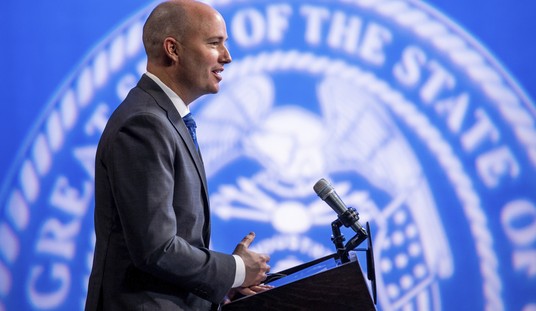Do laws barring those under the age of 21 from legally purchasing handguns (and in some states, certain semi-automatic long guns) actually make a difference in terms of reducing violent crime and homicides? Gun control activists certainly think so, but a new study from a pair of researchers at the University of Washington shows that the restrictions don’t have much of an impact on crime rates.
To reach their conclusions, researchers looked at the homicide rates between 1995 and 2017 in five states that instituted age restrictions on gun purchases; New York, Wyoming, New Jersey, Maryland, and Massachusetts. The researchers compared the firearm-related homicide rate in 32 states that didn’t increase the age to purchase a firearm to see if gun-related homicides decreased more in the states with the additional restrictions. What they found was that there was little difference between the states that imposed an increased age restriction and those that didn’t.
“The central issue is that there’s a very high degree of informal access to firearms, such as through family members or illicit channels,” said Caitlin Moe, the study’s lead author and a doctoral student in epidemiology in the UW School of Public Health. “And we can’t address that kind of availability with age limits.”
In the study, published Aug. 31 in JAMA Pediatrics, UW researchers found that rates of firearm homicides perpetrated by young adults age 18 to 20 years old were not significantly different in the two groups of states.
Determining what laws do have an effect on homicide rates is paramount, she added, because of the roughly 275,000 homicides involving a firearm during the years studied nearly 36,000 were perpetrated by people in the study’s age range. Because most handguns used in crimes by young adults are acquired from sources unlikely to be affected by age restrictions, “it is not surprising that we found no association” between state laws and homicides, the study said.
In other words, those 18-20 year-olds who are committing violent crimes with guns aren’t getting them legally to begin with, so the age restrictions imposed in some states aren’t going to have an impact. At best, these laws allow for another criminal charge to be filed after a crime has been committed. At worst, the laws deny young adults their Second Amendment rights to legally acquire a firearm under the guise of public safety.
In a nation with more than 400-million firearms in the hands of citizens, the idea of reducing “gun violence” by targeting the supply of firearms should be a non-starter, but Moe is still insistent that it’s the best way to reduce violent crime.
“It’s incredibly important that we address this major cause of death in young people,” said Moe, who is also affiliated with the Harborview Injury Prevention & Research Center. And that solution will need to be a countrywide, unified effort to address the “de facto availability” of firearms, especially among youth.
A unified, nationwide effort to address the availability of firearms at a time when Americans are buying guns like never before makes absolutely no sense. First of all, the Second Amendment protects our right to keep and bear arms, and unless a Biden/Harris administration packs the Supreme Court with anti-gun justices who overturn or nullify the Heller decision, that’s not going to change.
Secondly, Moe and her co-authors fail to acknowledge that homicides in the United States declined dramatically between 1995 and 2017, even while the “de facto availability” of guns remained unchanged. According to FBI uniform crime statistics, there were 21,606 homicides and non-negligent manslaughters in 1995, which resulted in a homicide rate of 8.2 per 100,000 people. By 2018 the number of murders had declined to 16,214, resulting in a homicide rate of 5.0 per 100,000 people. Even though the population of the United States grew by more than 60-million people, the raw number of murders declined by more than 4,000. That tells me that it’s not the availability of firearms that’s driving violence.
It also makes no sense to treat all 18-20 year olds as if they’re a threat to others. It’s difficult to find numbers specifically for 18, 19, and 20-year olds, but in 2018, there were about 5,000 arrests of 17-24 year olds for homicide, again according to the FBI. There are also more than 30-million Americans between the ages of 17 and 24, which means that far fewer than 1% of Americans in that age range are ever going to be charged with murder (or any other firearm-related offense, for that matter).
Reducing the supply of firearms for all in the hopes of stopping criminals from illegally acquiring guns is pipe dream for gun control advocates that has no basis in reality. In fact, that theory is completely backwards. What we should do instead is reduce the demand for firearms among those who are most likely to use them in the commission of criminal violent acts. How do we do that? One way is through a strategy of “coerced use reduction”; specifically targeting that small number of youthful offenders with a carrot-and-stick approach, as outlined by criminal justice professor David Kennedy in a 1996 paper that examined the effects of one such strategy in Boston, Massachusetts.
Because the members of particular gangs are fairly well known to police, probation officers, and streetworkers, and because these officials can readily gather more intelligence as required, these actions are carefully focused on active gang members and often on those gang members most deeply involved in the active disputes. Thus, uninvolved youth do not seem to be adversely affected. The second element is an explicit communication campaign, often carried out face-to-face between police officers and gang members, to deliver the message that it is violence that has provoked this unusual, heightened activity, and that it will take an end to the violence to make it stop. Third, gang mediation specialists are deployed and other social services mobilized. The gun violence seems invariably to stop. One such operation in Dorchester’s Wendover Street area resulted in not only the suppression of a severe gang violence problem but also the surrender of over a dozen handguns.
The widespread adoption of the strategy in Boston ultimately reduced the juvenile homicide rate by more than 50% without putting a single new gun control law on the books or trying to reduce the availability of firearms among law-abiding residents. Given the fact that Kennedy’s research has been available for nearly 25-years, the only reason I can think of that Moe and her colleagues are still suggesting a supply-side strategy of reducing access to firearms for all in the hopes of it having a trickle-down effect on criminals is that they’re so blinded by their own views on firearms that they can’t see any other way to reduce crime than by going after gun ownership itself.









Join the conversation as a VIP Member